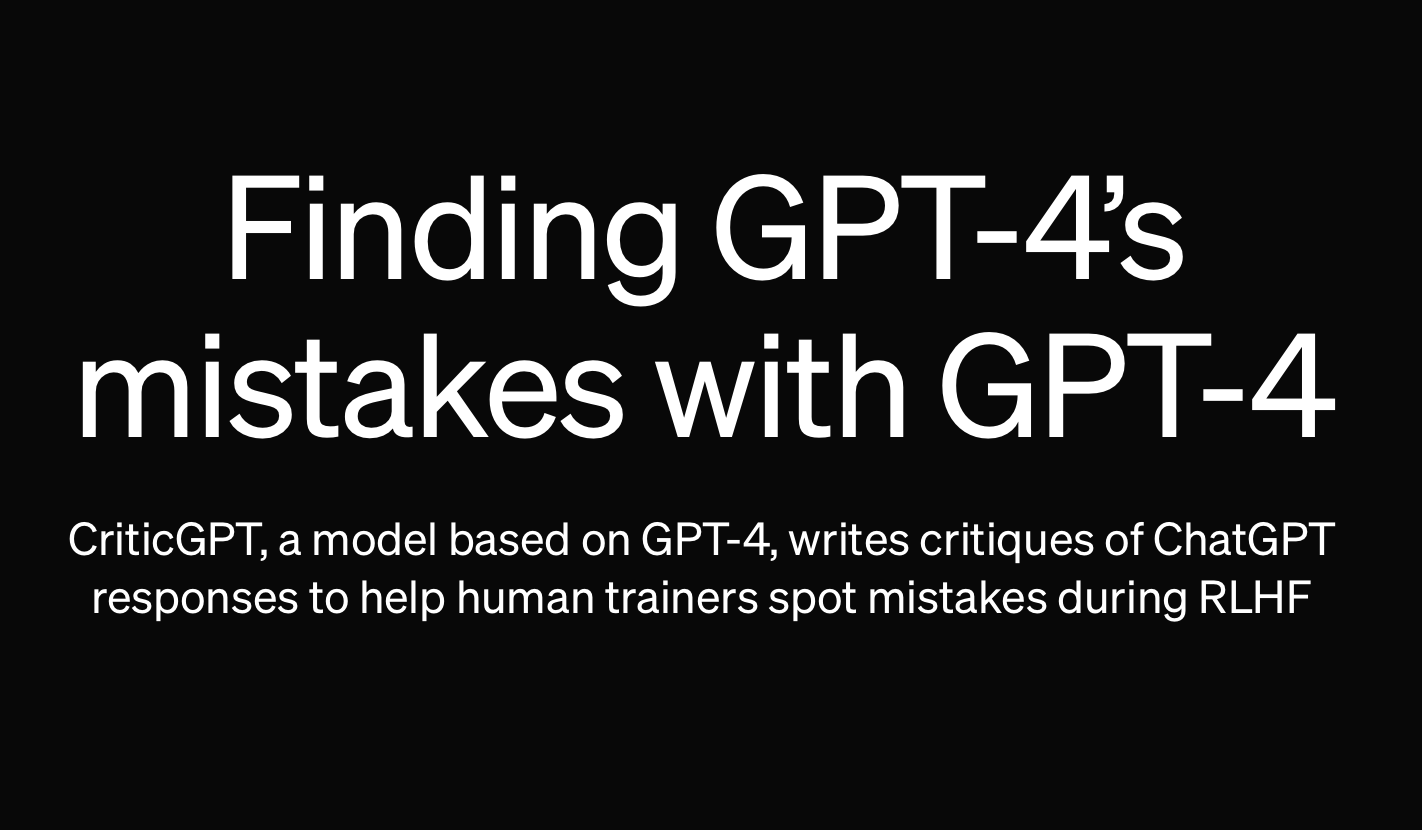OpenAI has recently launched a groundbreaking model named CriticGPT, which is generating significant excitement in the AI community. CriticGPT is designed to critique other AI models, particularly targeting errors in code produced by ChatGPT. The necessity for such a tool arises from the growing sophistication and complexity of AI systems like ChatGPT. Despite ChatGPT’s advanced capabilities, identifying mistakes within its output has become increasingly challenging for human reviewers.
How CriticGPT Enhances AI Evaluation
ChatGPT, powered by the GPT-4 series of models, continuously improves through a process called reinforcement learning from human feedback (RLHF). This involves human trainers reviewing ChatGPT’s responses and providing feedback, which the model uses to refine future outputs. However, as these AI models become more nuanced, spotting errors becomes more difficult. This is where CriticGPT proves invaluable.
CriticGPT, also based on the GPT-4 architecture, was developed to identify inaccuracies in ChatGPT’s responses, especially in coding tasks. It acts as a secondary review layer, catching errors that might slip past human reviewers. According to OpenAI’s research, human reviewers using CriticGPT outperformed those without it 60% of the time when assessing ChatGPT’s code output. This indicates that CriticGPT significantly enhances the accuracy of AI-generated code by identifying mistakes more effectively.
Training and Performance of CriticGPT
The training of CriticGPT followed a process similar to that of ChatGPT but with a unique approach. OpenAI researchers manually inserted errors into code generated by ChatGPT and then provided feedback on these mistakes. This helped CriticGPT learn to identify and critique errors more accurately. In tests, CriticGPT’s critiques were preferred over ChatGPT’s in 63% of cases involving naturally occurring bugs. CriticGPT is also noted for producing fewer minor, unhelpful complaints and being less prone to hallucinate problems that do not exist.
The research highlighted that agreement among annotators, or the people reviewing the critiques, was much higher for specific predefined bugs compared to more subjective attributes like overall quality or nitpicking. This suggests that identifying clear, objective errors is more straightforward and consistent than evaluating more subjective aspects of code quality.
Broader Implications and Applications
OpenAI’s research paper discusses two types of evaluation data: human-inserted bugs and human-detected bugs. Human-inserted bugs are those manually added by trainers, while human-detected bugs are naturally occurring errors caught during regular usage. This dual approach provides a comprehensive understanding of CriticGPT’s performance across different scenarios.
An interesting finding from the research is that agreement among annotators improved significantly when they had a reference bug description to work with. This underscores the importance of having a clear context for evaluation, which aids in making more consistent judgments.
CriticGPT’s performance is not limited to spotting errors; it also enhances the quality of critiques. Human reviewers often kept or modified the AI-generated comments, indicating a synergistic relationship between human expertise and AI assistance. This synergy is crucial because while CriticGPT is powerful, it is not infallible. It helps humans write more comprehensive critiques than they would alone while also producing fewer hallucinated bugs than if the model worked alone.
The Future of AI Evaluation with CriticGPT
The ultimate goal of CriticGPT is to integrate it into the RLHF labeling pipeline, providing AI trainers with explicit AI assistance. This is a significant step towards evaluating outputs from advanced AI systems, which can be challenging for humans to rate without better tools. By augmenting human capabilities, CriticGPT helps ensure that the data used to train AI models is more accurate and reliable, leading to better performance in real-world applications.
OpenAI has also implemented a method called Force Sampling Beam Search (FSBS) to balance the trade-off between finding real problems and avoiding hallucinations. This method allows CriticGPT to generate longer and more comprehensive critiques by using additional test time search against the critique reward model. FSBS ensures that the critiques are not just comprehensive but also precise, reducing the likelihood of hallucinations and nitpicks. This approach enhances CriticGPT’s ability to identify and articulate significant issues in code, making its feedback more valuable for human reviewers.
In practice, CriticGPT has demonstrated that it can help human reviewers write more comprehensive critiques while reducing the number of nitpicks and hallucinated problems. This was evident in experiments where human reviewers assisted by CriticGPT wrote substantially more comprehensive critiques than those working alone. This was true for both human-inserted bugs and naturally occurring bugs.
Conclusion
In conclusion, by using AI to help fix AI, OpenAI addresses one of the fundamental challenges in AI development: the difficulty of evaluating and improving increasingly sophisticated models. CriticGPT not only helps catch more errors but also improves the quality of human reviews, making the entire RLHF process more effective. There’s still much work to be done, but CriticGPT is a clear example of how innovative approaches can tackle some of the most pressing challenges in AI development.

